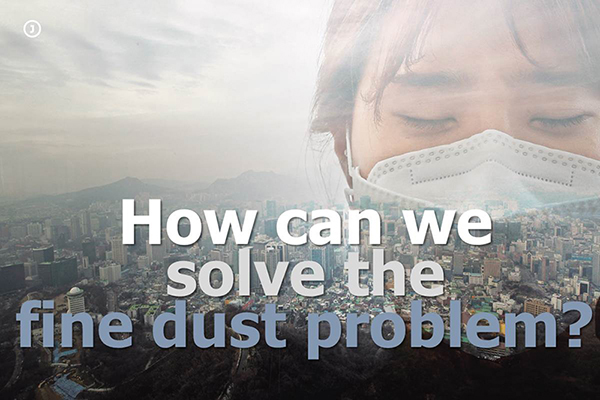[CARD NEWS: Opinion] How can we solve the fine dust problem?


1) “Once you get rained on, you will lose your hair.”
Children in Korea were often told this when they were growing up.
The rain mentioned is acid rain.
2) However, the quote is hardly ever heard these days as acid rain has eased off.
Instead, people’s worries have moved to another problem: fine dust.
3) How was the acid problem reduced? It was not a natural phenomenon, but the result of an enormous effort. By taking a look at this process, we might find a clue to reduce fine dust as well. The story traces back to Sweden in the 1960’s.
4) In the 1960’s, the Swedish government noticed their lakes were acidifying. They found that airborne sulfur dioxide gas from other countries was the cause.
5) The Swedish government asked the OECD to investigate, and the organization confirmed the influx of the pollutant across the borders.
6) In 1972, the Swedish government convened a worldwide meeting to report the seriousness of acid rain, which laid the foundation for international cooperation on environment protection — the United Nations Conference on the Human Environment.
7) To put the main ideas of the conference into action, worldwide efforts continued afterwards. Over the next 10 years, a series of principles to protect the earth were generated.
8) But there was a vulnerable point about the declaration; nations were not obligated to follow it.
9) Despite this weakness, pressure grew as more and more nations took part. This led to the final agreement that every participating nation would reduce their sulfur dioxide emissions.
10) What lesson can we learn from this whole process?
After setting consensus-driven basic rules, a principle that demands that nations take responsibility for the environmental impact of any of their actions must be included.
11) Studies and efforts back in the 1970’s raised the alarm about acid rain. The awareness eventually led the United States, the largest industrial country, to strengthen their environmental law.
12) The effort to reduce the amount of acid rain initiated in the 1960’s, so it took a few decades to resolve. As you can see now, the problem of acid rain is no longer an issue for a lot of the world.
13) South Korea these days is shrouded by fine dust particles, which have hit the worst level ever recorded. People cannot breathe comfortably even while wearing surgical masks. To find a solution to this brand new environmental issue, how can we apply the lessons we have learned?
14) We should create a surveillance system together with surrounding countries, such as China and Japan, and let those countries bear the responsibility.
15) Even though it might be a time-consuming job, the problem shall be solved in the long term.
16) Like acid rain has now become an issue of the past, people will be able to comfortably breathe without fine dust in the near future if the issue is tackled through international cooperation.
Directed by Lee Jeong-bong
Constructed by Kim Min-pyo
Designed by Bae Seok-yeong
Translated by Son Min-young
Edited by Jim Bulley










with the Korea JoongAng Daily
To write comments, please log in to one of the accounts.
Standards Board Policy (0/250자)